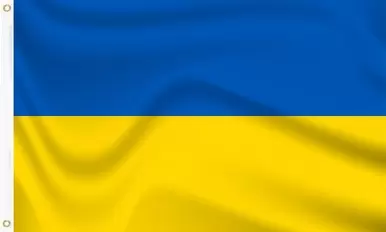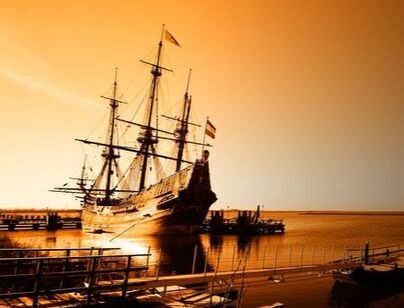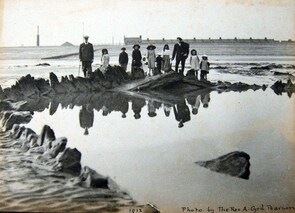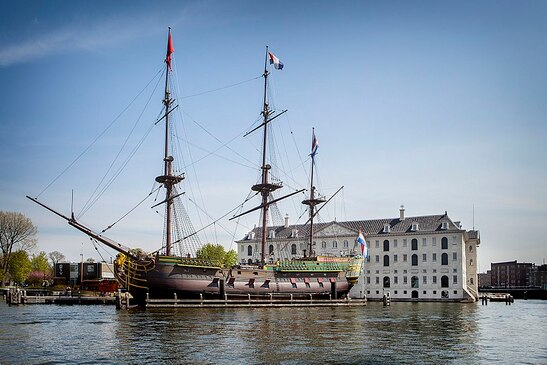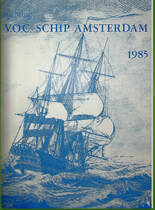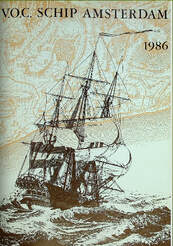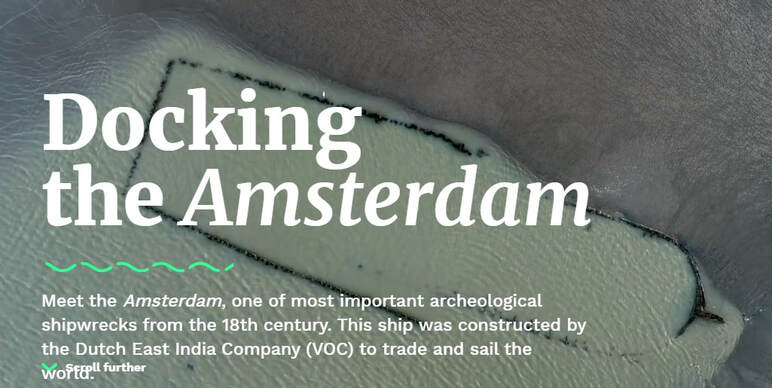The VOC Amsterdam Shipwreck 1749
HistoryThe Amsterdam was built in 1748 at the shipyard for the Amsterdam Chamber of the Dutch East India Company (VOC) in Amsterdam. The ship was made of oak.
The Amsterdam, a Dutch "Mirror Return Ship" (Dutch: Spiegelretourschip), built as an East Indiaman, for transport between the Dutch Republic and the settlements and strongholds of the Dutch East India Company in the East Indies. On an outward voyage these ships carried guns and bricks for the settlements and strongholds, and silver and gold coins to purchase Asian goods. ShipwreckingOn 8 January 1749 after two previous attempts to sail were stopped by adverse weather the Amsterdam finally sailed from Texel in Holland. On reaching the English Channel the crew were confronted by a strong westerly storm. For many days she got no further than Beachy Head, near Eastbourne. An epidemic appeared amongst the crew and a mutiny broke out. Finally, the rudder broke off and the ship, helpless in a storm, grounded in the mud and sand in the bay near Bulverhythe on 26 January 1749, 5 km (3.1 miles) to the west of Hastings. She began to sink into the mud, where much of the hull remains today.
|
Discovery
|
The Amsterdam was discovered after being exposed by a low spring tide. It is the best-preserved VOC ship ever found.
In 1969 Archaeologist Peter Marsden did the first surveying of the wreck and he advised further excavation. The VOC Amsterdam is visible at very low tide and the wreck site was designated under the Protection of Wrecks Act on 5 February 1974. The VOC Ship Amsterdam Foundation started researching the wreck, followed by major excavations in 1984, 1985 and 1986 during which huge numbers of artefacts were recovered. Some of the finds are on display at the Shipwreck Museum in Hastings, East Sussex, UK, with the exception of the anchor, which is now on display as public art at St Katharine Docks in London. |
LegacyA replica of the ship was built in Iroko wood by 300 volunteers using modern tools as well as tools of the period, between 1985 and 1990 at the Zouthaven (now Piet Heinkade), Amsterdam. It is moored next to the Netherlands Maritime Museum, where it is open to visitors of the museum (which has now reopened after being closed for several years for renovations).
As for the original ship, there had been hopes in the 1980s that the Dutch Government, which still owns it, might excavate the whole wreck and return it for restoration and display in Amsterdam, like the Regalskeppet Vasa in Sweden, or the Mary Rose in Portsmouth, but the funds were not forthcoming. Several decks and much of the bow lie submerged in the mud and are in remarkably good condition, being naturally preserved by the mud, and much of the cargo is still on board. |
Archaeology reports
Amsterdam Report 1984Wrecked in a storm in the English
Channel on 26 January 1749 Editorial committee: J. Gawronski, G.D. Van der Heide, B.A.G.H. Jutte, C. Paul, & R. San Giorgi
|
Amsterdam Report 1984Annual report of the VOC ship,
Amsterdam commitee 1986 Author: J.D.H Gawronski
| ||||||||||||||||||
Amsterdam Report 1984Annual report of the VOC ship,
Amsterdam commitee 1987 Author: J.D.H Gawronski
| |||||||||
